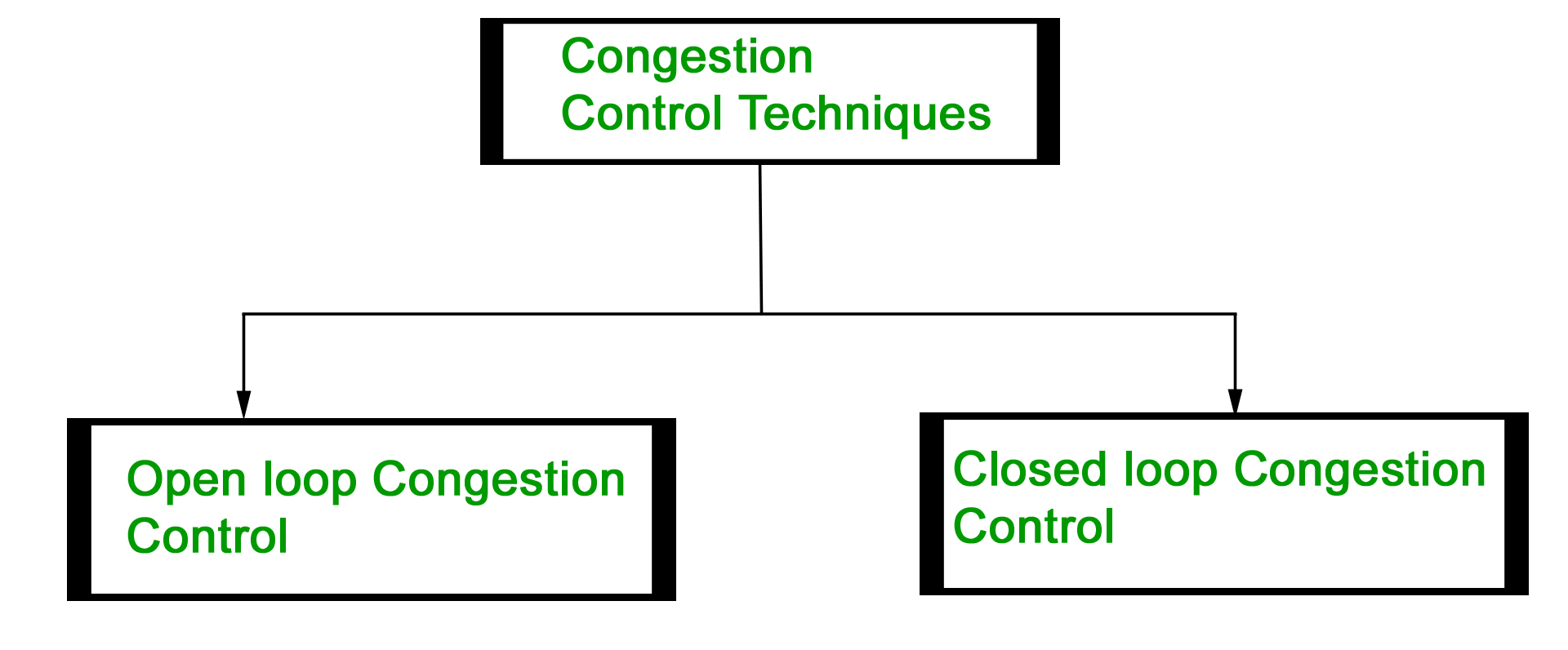Congestion Control techniques in Computer Networks
Last Updated : 04 Oct, 2025
Congestion occurs when the demand for network resources exceeds the available capacity, leading to delays and packet loss. Congestion control refers to the techniques used to control or prevent this issue, which can be broadly classified into two categories:

Open Loop Congestion Control
Open loop congestion control policies are applied to prevent congestion before it happens. The congestion control is handled either by the source or the destination.
1. Retransmission Policy: When a packet is lost or corrupted, the sender may retransmit it. However, excessive retransmissions can worsen congestion. To avoid this, retransmission timers must be carefully designed to balance efficiency and congestion prevention
2. Window Policy: The type of sliding window used by the sender impacts congestion. In Go-Back-N ARQ, multiple packets are retransmitted even if only one is lost, which increases load on the network. To minimize congestion, the Selective Repeat ARQ policy is preferred since it retransmits only the missing packets.
3. Discarding Policy: Routers may apply discarding policies to manage congestion. For example, less sensitive or corrupted packets can be selectively discarded without affecting the overall quality of service. In multimedia applications like audio streaming, dropping some packets may still preserve acceptable quality while reducing congestion.
4. Acknowledgment Policy: Acknowledgments themselves contribute to network load. To reduce this overhead, receivers can use strategies such as:
- Sending one acknowledgment for multiple packets (ACK for N packets).
- Delaying acknowledgments until a packet needs to be sent or a timer expires.
5. Admission Policy: Admission control prevents congestion by allowing new connections only if resources are available. Before establishing a virtual connection, switches verify whether sufficient bandwidth and buffer space exist. If congestion is likely, the request is denied to protect existing flows.
Closed Loop Congestion Control
Closed loop congestion control techniques are used to treat or alleviate congestion after it happens. Several techniques are used by different protocols; some of them are:
1. Backpressure : In this technique, a congested node temporarily stops accepting packets from its upstream neighbor. This may propagate backward through the network, slowing traffic up to the source. Backpressure works only in virtual circuit networks, where nodes know their upstream neighbors.

In above diagram the 3rd node is congested and stops receiving packets as a result 2nd node may be get congested due to slowing down of the output data flow. Similarly 1st node may get congested and inform the source to slow down.
2. Choke Packet Technique: In this method, a congested router sends a special choke packet directly to the source, instructing it to reduce traffic. Routers monitor resource usage, and when utilization exceeds a threshold, the choke packet is triggered. Only the source is notified, while intermediate nodes remain unaware of congestion.

3. Implicit Signaling: Here, no direct message is exchanged. The source infers congestion when, for example, acknowledgments are delayed or missing for a long time.
4. Explicit Signaling: A congested node directly informs the source or destination by embedding a congestion signal inside data packets, unlike choke packets which use separate control packets.
- Forward Signaling: Congestion information is sent to the destination, which then applies preventive measures.
- Backward Signaling: Congestion information is sent to the source, instructing it to slow down transmission.
Explore
Computer Network Basics
Physical Layer
Data Link Layer
Network Layer
Transport Layer
Session Layer & Presentation Layer
Application Layer
Advanced Topics
Practice
My Profile